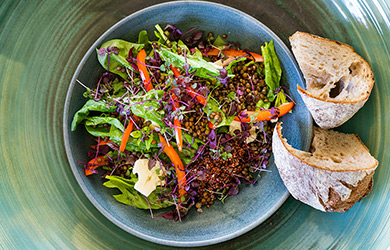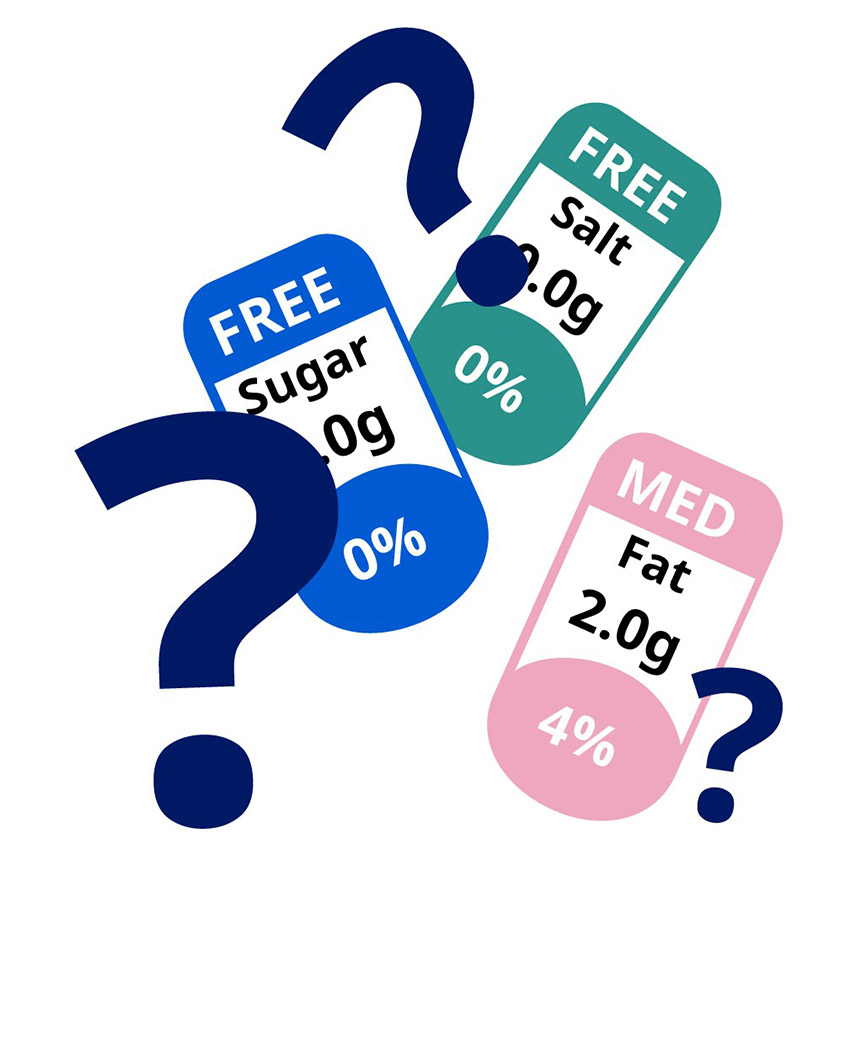
Team Novo Nordisk Cookbook
Team Novo Nordisk diabetes recipes designed for athletes and enjoyed by everyone.
With so many facts and figures on food packaging, it can be hard to
understand which products are actually good for us. Food manufacturers
are competing for our attention in the supermarket aisles, so they
bombard us with claims designed to catch our eye.
‘Sugar-free’, ‘reduced fat’, ‘organic’, ‘locally sourced’, ‘new improved recipe’ – it’s often just noise designed to distract you from the real nutritional information on the back of the label. According to a 2021 survey by the International Food Information Council, 60% of people in classed as having excellent/very good health always or often pay attention to food labels when shopping in person, compared to 43% in worse health1. But who has the time to study every individual food product they buy?
This simple guide aims to help you understand what the numbers mean, which ones you should focus on, and how to manage your diet to maintain a happy, healthy life with type 2 diabetes.
Some diabetic diets are based on balancing blood glucose by
limiting carbohydrates. Therefore, it’s important to focus on ‘total
carbohydrates’, which includes added sugars and fibre, not just sugar content2.
Some foods, such as milk and fruit, are nutritious despite being naturally high in sugar, and can be included as part of a balanced diet2,3.
Not all fats are created equal. Unhealthy fats like saturated
and trans fats raise your cholesterol and increase your cardiovascular
risk4. In contrast, good fats like monounsaturated and
polyunsaturated fats help to protect your heart, even if they’re high
in calories4.
For a food to earn a ‘reduced salt’ label, that means it has
25% less salt than the original version of that product5.
But that reduced level may still be relatively high. The same logic
applies to items boasting ‘reduced fat’.
Serving sizes on food labels can be misleading and designed to make sugar, fat and salt content look lower than it actually is6. If you have a meal plan that specifies serving sizes, see how they compare to the servings listed on the food label so you can stay within your daily calorie and carbohydrate goals.
Of course, a great way to minimise the guesswork in your
shopping basket is to have a clear plan of what meals are more
effective when managing your diabetes and which ingredients are safe
to choose.
A nutritionist with experience in type 2 diabetes can help you co-create a balanced diet and meal plan that also factors in your personal tastes.
You can also check out the Novo Nordisk cookbook, packed with wholesome, delicious, and easy-to-make recipes suitable for people with type 2 diabetes.
Want to learn more about healthy nutrition and reducing your risk of heart disease? Speak to your doctor.
HQ24DI00025





